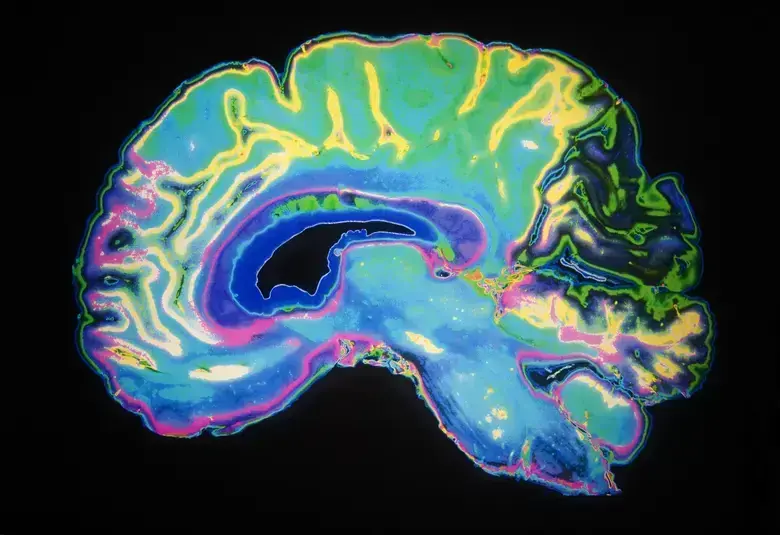Over the past 60 years, treatment for patients with major depressive disorder (MDD) has undergone transformative change. There are now several different therapeutic strategies and treatments with different mechanisms of action. There are several therapeutic strategies to address inadequate response to antidepressants which may offer the potential to individualize treatment. The evolution of treatment strategies in MDD was discussed in this Lundbeck-sponsored special session at AsCNP Virtual 2021.
지난 60년간 주요 우울 장애(MDD) 환자들에 대한 치료는 큰 변화를 이루었습니다. 이제는 작용 기전이 서로 다른 여러 가지 다양한 치료 전략과 치료법이 생겼습니다. 항우울제에 충분히 반응하지 않는 것을 해결하기 위한 몇 가지 치료 전략을 발견했고, 이는 환자별로 치료를 개인화할 수 있는 가능성을 제시했습니다. 이번 AsCNP Virtual 2021에서 룬드벡이 후원하는 특별 세션에서는 MDD 치료 전략의 발전에 대해서 논의되었습니다.
Treatment goals for MDD have changed quite significantly over the past decades explained Professor Fagiolini, University of Siena, Italy, during this session at AsCNP Virtual 2021. Fifty years ago, the aim of treatment was simply to achieve a response, or a 50% reduction in symptoms according to specific scales. As better treatments became available, remission became possible. Now, we have gone further, clinicians still want response and remission, but the main goal is to achieve full functional recovery, where symptoms are essentially absent and the patient returns to premorbidity.1
이탈리아 시에나 대학의 파지올리니 교수는 AsCNP Virtual 2021에서 열린 이 세션에서 지난 수십 년 동안 MDD 치료 목표에 상당한 변화가 있었다고 설명했습니다. 50년 전 치료의 목적은 그저 약물에 반응을 보이거나 특정 계통 증상의 50%를 완화하는 것에 그쳤습니다. 보다 나은 치료가 가능해지면서 이제는 관해가 가능해지게 되었습니다. 임상의들은 여전히 반응과 관해를 원하지만 현재 우리의 주된 목표는 이보다 더 나아가 환자의 증상이 본질적으로 사라지고, 발병 전 상태로 돌아가는 완전한 기능적 회복을 달성하는 것입니다.1
Now, the main goal in MDD is to achieve full functional recovery
현재 MDD에 있어서 주된 목표는 완전한 기능적 회복을 달성하는 것입니다.
Have treatment options kept up with therapeutic goals in MDD?
MDD의 치료 옵션은 이러한 치료 목표를 따라가고 있나요?
Treatment for MDD has also evolved significantly over the past 60 years explained Professor Philip Gorwood, University of Paris, France; we have gone from tricyclic antidepressants first available in the 1950s, to SSRIs and SNRIs that became available in the 1980s and 1990s, to the agents that we have available now with multimodal mechanisms of action.
프랑스 파리 대학의 필립 고우드 교수는 1950년대에 처음으로 이용된 삼환계 항우울제에서, 1980년대와 1990년대에 이용 가능해졌던 SSRI 및 SNRI를 거쳐, 현재 이용되는 복합적 작용 기전을 지닌 제제로 발전하면서 MDD 치료가 지난 60년간 크게 발전했다고 설명했습니다.
Even with current treatments, however, patients with MDD are still suffering quality-of-life (QoL) and functional impairments. Observational analysis of 1297 patients with MDD showed that only 34% of patients treated with an SSRI/SNRI achieved functional recovery after 16 weeks of treatment.2
그러나 현재의 치료법을 적용하더라도 MDD 환자들은 여전히 삶의 질(QoL) 문제와 기능적 장애를 겪고 있습니다. MDD 환자 1,297명을 관찰 분석한 결과, SSRI/SNRI로 치료한 환자들 중 34%만이 16주 치료 후 기능적 회복을 달성했습니다.2
An important consideration when choosing medication for MDD is that it is more difficult to treat over time;3 the longer and more frequent the episodes, the lower the chance of response, explained Professor Gorwood. Moreover, adequate response in later treatment lines may not be achieved by changing treatment. In the STAR*D study, less than 1 patient in 5 achieved adequate response with the third therapy in the treatment sequence,3 highlighting the importance of finding the most appropriate treatment as quickly as possible.
고우드 교수는 MDD 약물을 선택할 때 시간이 지날수록 치료가 어려워진다는 것을 반드시 고려해야 하며3, 삽화가 길어지고 자주 발생할수록 치료 가능성이 낮아진다고 설명했습니다. 또한 치료법을 변경하면 이후의 치료선에서 충분한 반응을 얻지 못할 수 있습니다. STAR*D 연구에서는 환자 5명 중 1명 미만이 세 번째 치료법에서 적절한 반응을 나타내면서,3 가능한 한 빠르게 가장 적절한 치료법을 찾는 것이 중요하다는 점이 강조되었습니다.
MDD becomes more difficult to treat with time
MDD는 시간이 지날수록 치료하기가 더 어려워집니다.
Can augmentation with antipsychotics improve treatment individualization?
항정신병 약물의 처방이 치료의 개인화를 향상시킬 수 있을까요?
Augmentation with an antipsychotic (AP) is a therapeutic option in patients with inadequate response to antidepressant treatment. Atypical APs are a heterogenous group of agents that have complex pharmacology, binding to multiple dopamine and serotonin receptors, as well as interacting with noradrenergic, histaminergic, and cholinergic pathways explained Professor Fagiolini.4 No two atypical APs have the same receptor action, offering the potential to match the receptor profile of an agent to the clinical profile of individual patients.4
항정신병 약물(AP)의 처방은 항우울제 치료에 대한 반응을 충분히 나타내지 않는 환자들에게 적용할 수 있는 치료법입니다. 파지올리 교수는 비정형 AP는 여러 도파민 및 세로토닌 수용체에 결합할 뿐만 아니라 노르아드레날린성, 히스타민성 및 콜린성 경로와 상호작용하는 복잡한 약리학을 갖는 이종 약물 그룹이라고 설명했습니다.4 두 개의 비정형 AP는 동일한 수용체에 작용 하지 않으며 약물의 수용체 프로파일을 개별 환자의 임상 프로파일에 일치시킬 수 있는 가능성을 제공합니다.4
Other options in the case of inadequate response to initial antidepressant therapy are optimization of the initial approach (by ensuring adequate dose and titration of treatment), switching to another antidepressant, and combining antidepressants. Other adjunctive approaches include the addition of lithium, a benzodiazepine, or psychotherapy. Each of these strategies have been considered in several sets of guidelines.5─8
첫 번째 항우울제에 반응이 충분하지 않은 경우, 대안으로는 초기 접근법의 최적화(적절한 용량과 증량법 선택), 다른 항우울제로의 전환, 항우울제의 병용이 있습니다. 다른 부수적인 접근법들로는 리튬, 벤조디아제핀 처방 또는 심리 치료의 병행이 있습니다. 각각의 전략들은 몇 가지 가이드라인에서 고려되어 왔습니다.5─8
Treating anhedonia offers a gateway to improvement of other MDD symptoms
무쾌감증의 치료는 다른 MDD 증상들의 개선에 이르는 길입니다.
One factor important for improving QoL and functioning in patients with MDD is treatment of anhedonia.9─11 Anhedonia is a core feature of MDD,12,13 and when present, it is difficult to improve other MDD symptoms,11 explained Professor Fagiolini. The presence of anhedonia is associated with higher rates of social withdrawal, social impairment, reactivity of mood, brooding about past events and diurnal mood variation.9
MDD 환자들의 삶의 질과 기능을 개선하는 데 있어 중요한 한 가지 요소는 무쾌감증의 치료입니다.9─11 파지올리니 교수는 무쾌감증은 MDD의 핵심적인 특징인데12,13 이것이 발현된 경우 다른 MDD 증상들을 개선하기가 어렵다고 설명했습니다.11 무쾌감증의 발현은 사회적 위축, 사회 기능 저하, 기분에 대한 반응, 과거 사건에 대한 집착, 주간 기분 변화의 비율이 높은 것과 관련이 있습니다.9
Anhedonia is also a negative predictor of time to remission and recovery in patients with MDD treated with antidepressants. In a one-year study of patients with MDD treated with antidepressants, time to remission and recovery increased from 128 and 255 days to 316 and 624 for patients with low baseline anhedonia and high baseline anhedonia, respectively.10
또한 무쾌감증은 항우울제로 치료받은 MDD 환자들의 관해 및 회복까지 걸리는 시간을 늦추는 인자이기도 합니다.항우울제로 치료받은 MDD 환자들을 대상으로 한 1년간의 연구에서 무쾌감증이 경미한 환자들과 무쾌감증이 심한 환자들의 관해 및 회복까지의 기간은 각각 128일과 255일에서 316일과 624일로 증가했습니다.10
Improvement of anhedonia is therefore an important factor to consider when treating MDD.
따라서 무쾌감증의 개선은 MDD 치료에 있어 고려해야 할 중요한 요소입니다.
Educational financial support for this session was provided by Lundbeck.
본 세션에 대한 교육적 재정 지원은 룬드벡에서 제공했습니다.
Our correspondent’s highlights from the symposium are meant as a fair representation of the scientific content presented. The views and opinions expressed on this page do not necessarily reflect those of Lundbeck.




